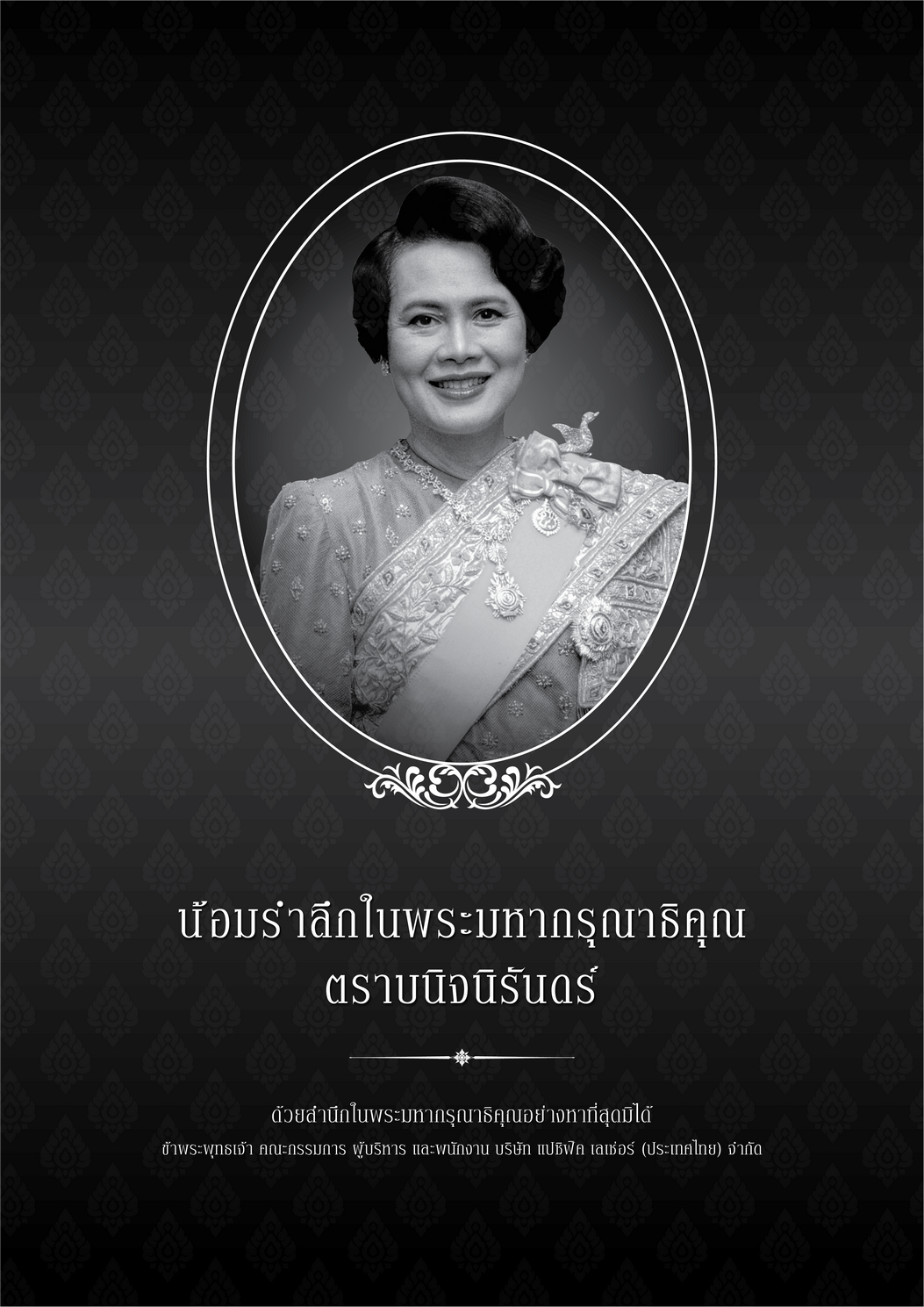
Discover Tumosa Biang: A Hidden Gem in the Mountains of Northern Thailand
If you're looking for an off-the-beaten-path destination in Northern Thailand, the 'Tumosa Biang' community in Mae Lanoi, Mae Hong Son, offers an authentic cultural experience. The Lawa people, or as they call themselves, "Lawoek," have lived in the highlands for generations. They are known for their agricultural practices, growing rice, corn, avocados, and coffee. But beyond farming, this community is opening its doors to visitors with several homestay options, each offering a unique glimpse into their way of life.

The atmosphere of Ban La-ub, the Lawoek village: A picturesque village nestled in the highlands, with traditional wooden houses, spread across the mountain slopes, showcasing the simple, nature-aligned lifestyle of the Lawoek people.
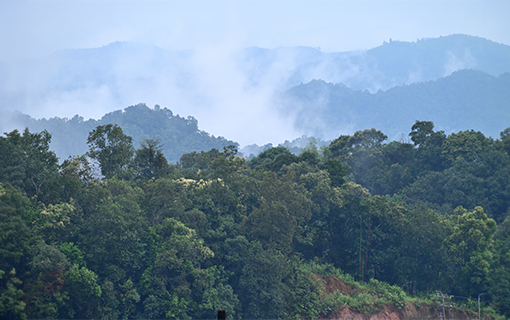
Mist-covered mountains (captured from the house balcony): A serene view of mist gently enveloping the mountains, seen from the balcony, creating a peaceful and reflective atmosphere.

Cornfields and vegetable plots: Fields of corn alternating with vegetable gardens, a testament to the community's agricultural lifestyle.
What sets the Lawoek community apart from other northern villages is their deeply held belief that their homes must be situated on higher ground to avoid misfortune. This belief passed down from their ancestors, means that their village, Ban La-ub, is perched high in the mountains. Visitors are treated to panoramic views, starry nights, and misty mornings—a true escape into nature.
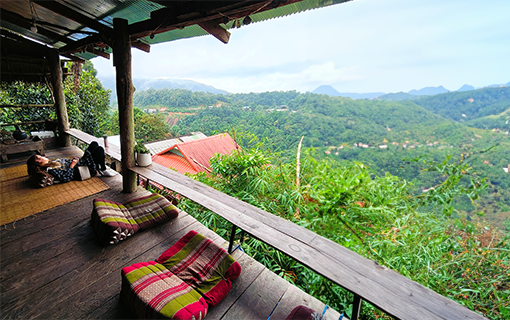
Homestay balcony (P’Jom’s Homestay): A cozy balcony at P’Jom’s Homestay, offers a stunning view of the surrounding nature and is perfect for relaxation.
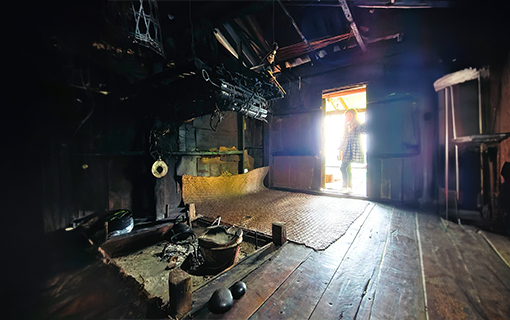
Traditional homestays: Some homestays preserve their authentic charm, with a central kitchen used not only for cooking but also as a fireplace to provide warmth on chilly nights, creating a cozy and timeless atmosphere.
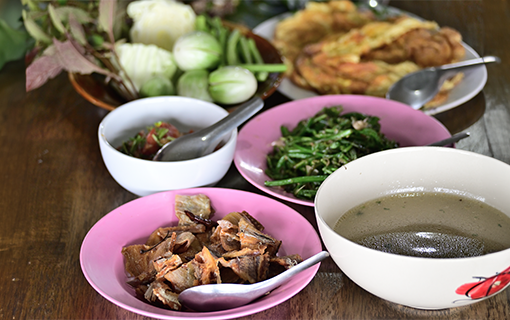
Simple meal, warm welcome: A homely meal prepared in the open kitchen, welcoming tourists from the city with warm, comforting local dishes.

Coffee on the balcony: Sipping fragrant coffee while seated on the balcony, overlooking the misty mountains and enjoying the fresh mountain air—a perfect start to the day.
Aside from the breathtaking scenery, the Lawoek people are master artisans. The women specialize in weaving and embroidery, blending traditional designs with modern touches, while the men are skilled in silverwork. Staying in Ban La-ub offers a chance to learn about these ancient crafts firsthand.
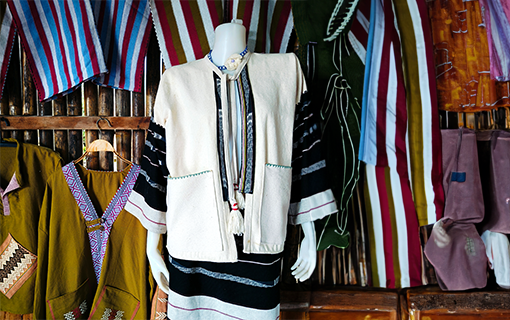
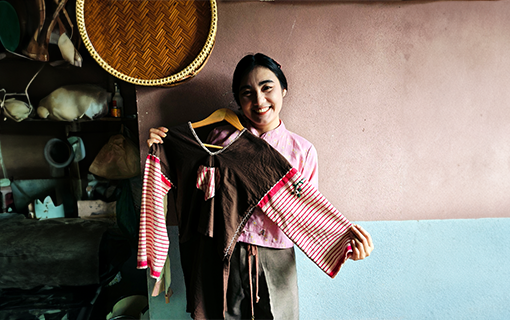
Traditional and modernized clothing: A display of both old-style and contemporary adaptations of traditional clothing, blending history with modern fashion.
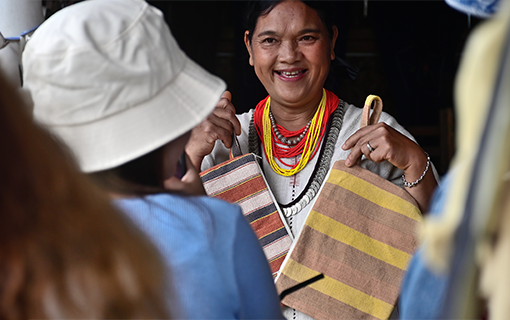
Other handcrafts: Besides clothing, there are also handcrafted products such as bags, showcasing the community's versatile design skills.
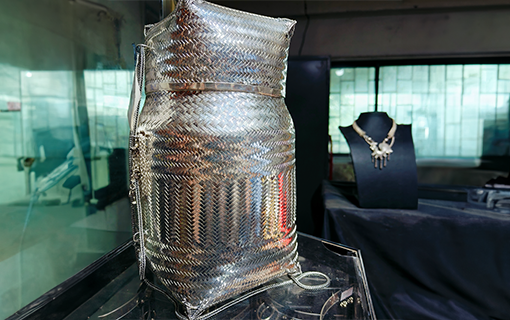

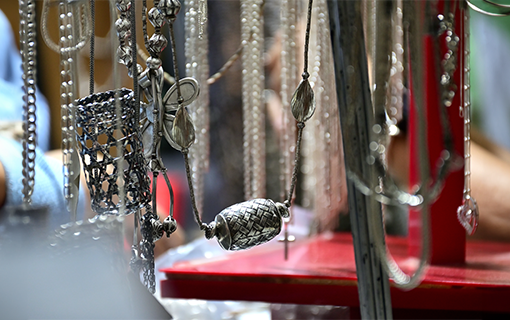
Silver handicrafts: Intricately crafted silver pieces, ranging from small trinkets to larger, more elaborate designs, with prices starting from a few hundred baht up to mid-level six figures.
Interestingly, Ban La-ub was originally known as "Tumosa Biang." "Tumosa" means "mountain," and "Biang" refers to a tree that once covered the hills but is now scarce. The community is working to conserve and replant these trees, making it an eco-conscious destination as well.
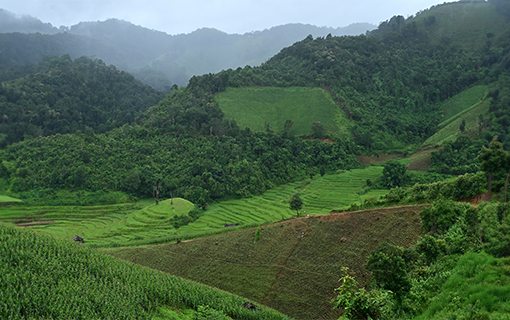
Rice paddies in the valley: Picturesque rice paddies nestled within the valley, reflect the traditional farming practices of the region.
Ban La-ub is a year-round destination, with cool weather during the rainy season and winter, and a refreshing climate even in the dry months. If you’re planning a trip to Northern Thailand, Ban La-ub (or Tumosa Biang) is ready to welcome you with its rich culture, warm hospitality, and stunning natural beauty.
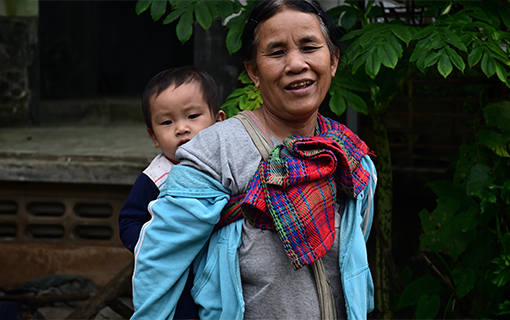
Warm smiles: One of the best experiences of visiting the Lawoek community is the genuine warmth and smiles. Everyone greets you with friendliness and hospitality.
Editor in Chief : Nampetch Siramanon
Editor: Pacific Leisure (Thailand)
Content Creator : Mr. Saroj Na Ayutthaya
Navigate
Terms & Privacy
Pacific Leisure (Thailand) Limited
No. 888/154, Mahatun Plaza Bldg., 15th Floor,
Ploenchit Road, Lumpini, Pathum Wan,
Bangkok 10330, Thailand
Phone : +66 22 542 966
Mobile : +66 87 347 3111, +66 63 224 1384
Email : info@pacificleisureth.com
Website : https://www.PacificLeisureTH.com
(TAT) Licensed No: 11/00161

